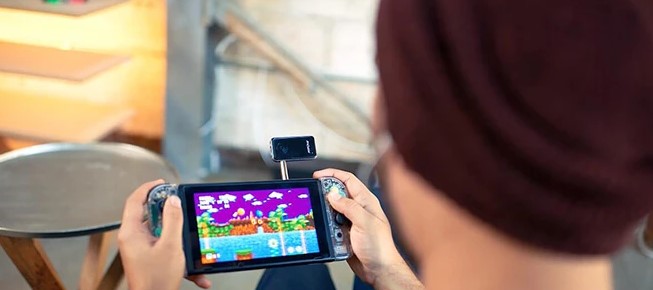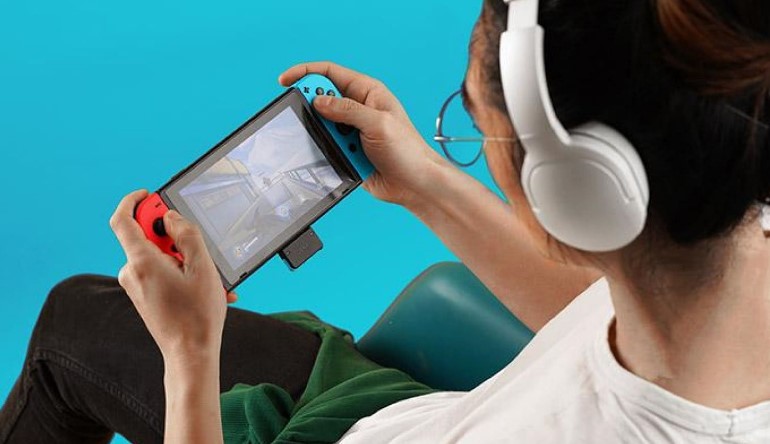How To Fix Nintendo Switch Bluetooth Not Working in 2026
Are you having Bluetooth connection issues on your Nintendo Switch? If the Bluetooth functionality on your Nintendo Switch is not working when you try to sync a Joy-Con controller or a wireless headset, you’ll have to perform a set of troubleshooting steps to know the reason for it.
In this article, we’ll explain to you why you may encounter Bluetooth problems and what you can do if you are dealing with it.
What are the usual Nintendo Switch Bluetooth problems?

Bluetooth problems on Nintendo Switch have been few and far between but once they occur, they may require serious attention as permanent solutions often mean repair or unit replacement.
For the fortunate users who may have less critical problems, some of the usual root causes can be a matter of weak battery (on the Joy-Con controller), signal interference, or a damaged accessory.
Joy-Con controllers keeps disconnecting
By far, the most common issues as far as Bluetooth functionality on the Switch is concerned, is with its first party Joy-cons. The Nintendo Switch’s bluetooth is primarily designed for its wireless Joy-Con controllers so it’s not surprising that most cases of Bluetooth problems has something to do with the connection between these devices (console and controllers).
Disconnection can happen if a controller’s battery is weak or damaged. Bluetooth signal interference can also be a factor if your controllers are unable to connect at all.
Nintendo Switch Bluetooth not detected
We’ve also received reports about some Nintendo Switch consoles being totally unable to connect to wireless controllers when in docked mode. If this has been happening on your console, it may be due to a console fault, a software glitch, or a controller issue. You can easily fix Bluetooth not working issue by simply updating your Nintendo Switch.
Nintendo Switch pairing issues
If your Joy-Con or Pro controller keeps disconnecting, or can’t connect to the console at all, you have a pairing issue. Sometimes, this can happen if the accessory like a Joy-Con is defective, has a hardware malfunction, or when another Bluetooth device is hampering the connection.
Pairing issues are not limited to the Joy-Con controller or any third party controller though. Bluetooth pairing problems have also been reported to have occurred for some Nintendo Switch consoles when using a Bluetooth transmitter, which are typically manufactured by third party companies. Some Bluetooth headsets do not work well with a particular Bluetooth transmitter and, sometimes, may even interfere with the main Bluetooth functionality of the console.
What are the causes for Bluetooth issues on Nintendo Switch?
Some Bluetooth problems on the Nintendo Switch are easily fixable as their causes are minor or temporary. There are some few cases however that repair or console replacement may be a necessary intervention, like when the main reason for the problem is bad hardware.
Below are some of the common reasons for often reported troubles with Nintendo Switch Bluetooth functionality.
Signal interference.
While bluetooth technology has greatly advanced over the years, one of the still usual reasons for bluetooth connectivity issues, particularly on the Switch, is something that we don’t see — signal interference. This can sometimes be a frustrating issue to fix as there’s no tool that a user can use to check for it.
In order to work on devices, bluetooth technology uses the industry standard 2.4GHz radio frequency. Sometimes, other devices in the vicinity of your Switch and controllers may also be transmitting and receiving in the same frequency. Your home wifi router is most likely using 2.4GHz as well as other wireless devices like headphones, baby monitors, wireless CCTVs, or cordless phones. Even a household appliance microwave oven may present a problem with some Bluetooth gadgets if they are too close.
Of course, Nintendo has designed its console and Joy-Con controllers to ignore potential home bluetooth hazards but no system is perfect after all. It’s very unlikely that a user will encounter bluetooth signal interference on properly designed devices but radio frequency interference may happen from time to time.
Bluetooth issues due to software glitch
We’ve seen some modded or jailbroken Nintendo Switch consoles having Bluetooth issues from time to time. While not all modded consoles have this problem, you should consider reverting to the official software version of your Switch if you started experiencing Bluetooth connectivity issues right after modifying the firmware.
Hardware malfunction
If you have a physically damaged controller, headset, or console and you’re experiencing Bluetooth connection issues, bad hardware may be to blame for it. The internal circuit of the broken device may be causing a glitch that cuts off Bluetooth. I’ve personally seen it with my own Bluetooth headset that’s connected to my Switch.
Unfortunately, in most situations, a damaged hardware is usually beyond an average user’s ability to fix so if this is your case, you’ll likely need to replace that device.
Physical damage to console or controller
If your bluetooth connection problem happens between the Switch console and controller (Joy-Cons, Pro, or third party), you should check if both devices are damaged. In handheld mode, the console may be accidentally dropped by kids. Even if there’s no visible crack or damage on the outside, the impact of the console hitting the floor may be more than enough to break some components internally.
How to fix Nintendo Switch Bluetooth issues
If the bluetooth functionality in your Nintendo Switch is not working, any of the following solutions might help.

Fix #1: Keep the system software updated.
The current bluetooth connectivity issue you’re experiencing may be caused by a minor bug, programming error, or software glitch. Some of such issues are fixed by making sure that your Switch runs the latest software version.
If you’re having an issue connecting your Joy-Con controllers, you can also try to check if a manual firmware update for them may help.
Fix #2: Check for bluetooth signal interference.
Stopping bluetooth signal interference is not a straightforward task. Unless you know for certain that the reason why your Nintendo Switch bluetooth issue has something to do signal interference, you’ll need to narrow down possible factors. Below are some of the things that you can do in this situation:
Keep line of sight clear.
Although bluetooth signals can penetrate walls, certain barriers or materials such as thick, concrete walls, glass, metal or, marble may significantly hamper them. If there’s anything that between your Nintendo Switch and the affected device, it may be blocking the signal. Try removing any barriers and see if that will work.
Use a different router channel.
For some users, the reason for their Bluetooth issues at home may be their own crowded wifi channel. You can check if this is the case by going into your router settings and switching to a different channel just in case.
Turn off microwave or unnecessary potential bluetooth devices.
If you happen to experience bluetooth connectivity issues only when you use a microwave oven , or even when you turn on fluorescent lighting at home, you may be getting interference from these sources. Try turning them off and see if that will resolve your problem.
Fix #3: Try another controller or bluetooth device.
If you still can’t pair your Joy-Con controller to your Nintendo Switch, or if bluetooth functionality is not working in general when you try to connect a wireless headset, there’s a chance that the reason for it may not be the console but the accessory itself. To know if that’s the case, try to connect another accessory, for example, another wireless headphone or controller and see if that will pair normally.
If the second accessory works fine, then the first accessory may be defective.
Fix #4: Check for damage.
Some bluetooth issues are not due to a software glitch or an accessory firmware problem but are the result of hardware damage. If your console has been dropped or has been hit by a hard object before, it’s internal circuit or components may be damaged. Unfortunately, in this situation, the most likely solution for you is either have the Switch repaired or replaced. The same is true if you suspect that the issue lies with your Joy-Con controller instead of the console.
To know, we suggest that you contact Nintendo support or visit your local Nintendo store.
Learn how to send your Nintendo Switch for repair.
Other interesting articles:
- How To Use Nintendo Switch Zoom Feature | NEW 2021!
- How To Install And Play Fortnite On Nintendo Switch in 2026
- How To Check Battery Life On Nintendo Switch (Console And Controllers)
- How To Connect Bluetooth Headphones To Nintendo Switch | 2021
Visit our TheDroidGuy Youtube Channel for more troubleshooting videos and tutorials.